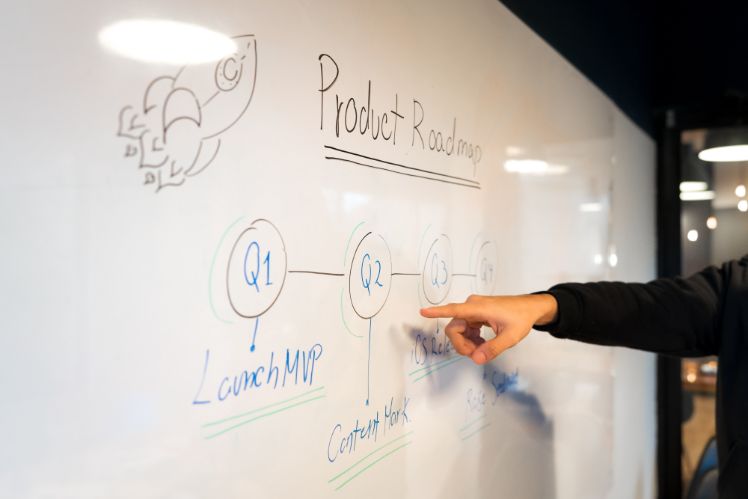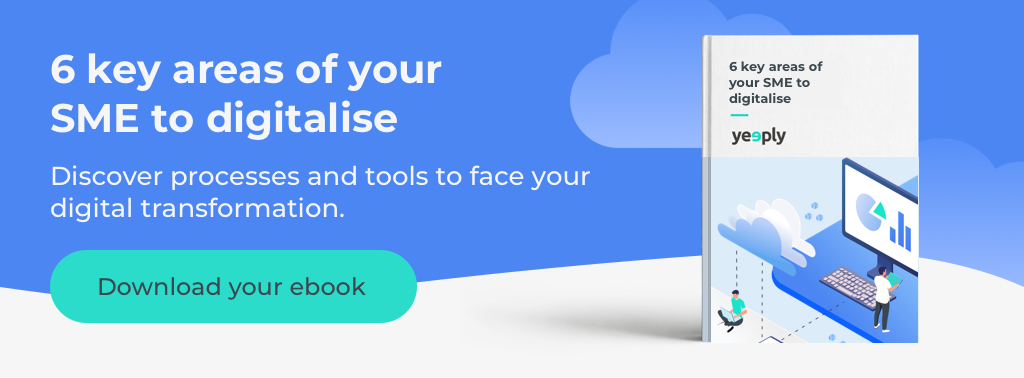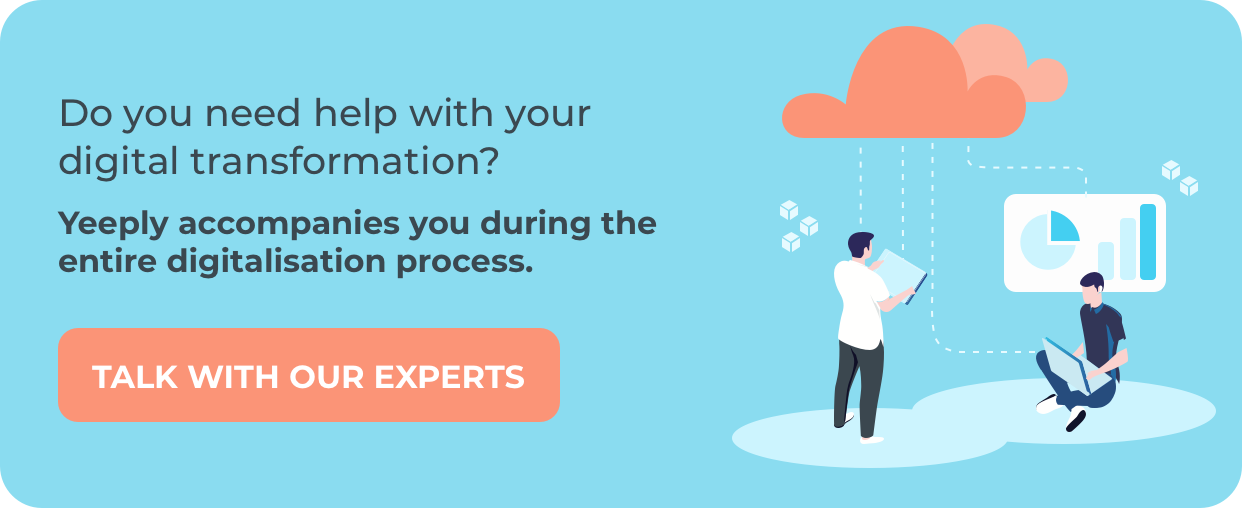Companies have been experimenting with process automation for years and the results they have achieved are truly amazing.
Task automation is capable of attaining an annual saving of 35% in manufacturing costs and reducing process time by 60%. It enables businesses to produce more and better while saving costs and maximising their profit.
Automation is now going a few steps further and becoming smart.
Index
- What is Intelligent Process Automation?
- The five main technologies
- IPA’s main purpose
- The benefits entailed by Intelligent Process Automation
- How to kick off your IPA transformation
What is Intelligent Process Automation?
Intelligent Process Automation (IPA) involves a series of technological breakthroughs that can imitate the activities carried out by humans and that are able, over time, to learn how to carry out their tasks better and better.
This kind of automation makes use of techniques such as data flow management, recognition of areas for improvement, reduction of repetitive manual tasks, or pattern analysis to improve decision making.

The five main technologies
Among all the technologies that can be used in IPA, these are some of the most noteworthy:
1. Robotic Process Automation
Robotic Process Automation (RPA) consists of software that automates routine tasks such as data extraction and cleansing by using already-existing user interfaces. The robot here has a user ID and performs rule-based tasks.
It can make calculations or verify files, for instance.
2. Smart workflow
This technology integrates tasks performed by both humans and machines, enabling us to monitor processes in real-time throughout the tasks’ entire lifetime.
It is capable — for example — of managing the transfer of information between different teams working on a given process and providing statistical data on its bottlenecks.
3. Machine learning
Machine learning consists of algorithms that identify data patterns and classify them to make predictions for new data input or provide information on known patterns.
For example, it can be used in the human resources department to determine and evaluate key attributes in leaders and managers to predict which the best candidates for certain specific positions are.
Read more: Artificial Intelligence vs Machine Learning vs Deep Learning
4. Natural Language Generation (NLG)
This technology involves software engines that create fluid interactions between humans and digital devices by following rules that allow them to translate data into text or speech.
It is employed, for instance, to draw up management reports automatically based on statistical data and without the need for human intervention.
5. Cognitive agents
This technology merges machine learning with natural language generation and is capable of executing tasks, communicating, learning from data, and even making decisions based on detecting emotions.
An example of its use would be its deployment in chatbots and phone support centers to provide help to employees and customers.
Read on: Why Chatbots are Key to the Future of Business Intelligence
IPA’s main purpose
Intelligent Process Automation aims at attaining greater efficiency and performance in employees, reducing operational risks, improving response times, and providing a better user experience.
IPA is meant for taking routine tasks on, enabling human employees to focus on customers and on thinking about how to keep the company on the growth track. Having been liberated from data gathering tasks, employees may focus on more creative tasks intended for achieving the company’s business objectives.
The benefits entailed by Intelligent Process Automation
Its advantages are quite clear theoretically, but what are IPA’s main benefits at a practical level?
- Coordinating actions. If we deploy RPA technology on its own, we’ll be able to have it complete individual tasks for us. However, if we go a step further and combine it with IPA, we’ll be able to coordinate the work between robots, employees, and systems.
- Freeing employees from routine and repetitive tasks. This will allow them to work more efficiently in more skilled areas and enables workflows to be better planned.
- Minimising risk and errors. Automating processes entails reducing risks such as incorrect data input.
- Thorough visibility of the entire processes. IPA grants this in real-time, thus rendering identifying bottlenecks or areas needing improvement easier.
- Increasing responsiveness and speed. The boost in speed and responsiveness provided by this technology by accelerating data processing and streamlining change implementation also enables a continuous improvement of the business processes.
➡️ ️Do you want to automate your business processes? Let us help you!
How to kick off your IPA transformation
There is another advantage to deploying IPA in your company: it does not require a significant investment in infrastructure, since it runs on the computer systems that your company already has.
In our experience, some of the most important steps to drive a successful IPA transformation are:
Step 1: Align the IPA’s objectives with your business strategy
To be effective, you must be clear about your company’s overall business strategy and the role that its operating system will play in achieving its objectives. Once this is clear and sorted out, it’s then possible to align the IPA’s objectives with your company’s strategy model and thus be able to get the most out of it.

Step 2: Design a deployment scheme for the IPA
A first IPA implementation roadmap should be conceived detailing all current tasks and processes, as well as the resources and capabilities required to carry them out. Automation improvement opportunities must be identified to balance impact and feasibility and thus be able to obtain solutions from the very beginning.
Step 3: Develop a minimal marketable product fast
Implementing everything at once can be overwhelming, so it is advisable to begin by picking just one specific process and improving it. Once this process has been polished, carry on with other ones. By proceeding this way, we will also grant ourselves some extra time to make any necessary adjustments or changes and to procure solid progress in our company’s IPA transformation.
Step 4: Create value
All automation must be built to ensure that each system becomes, over time, more effective and therefore generates more value.
Keep reading | Hyperconvergence: The Future of Digital Infrastructure
Step 5: Incorporate sustainability into the system
To do so, you can create a hub from which the transformation will be driven while supporting its deployment in several ways: by incorporating it into your company’s vendor management, by building a library of solution patterns, by setting up an operating model to scale objectives, and by adding new capabilities in a phased manner.
Step 6: Coordinate change and communication
As in any transformation, this one will require a plan in which communication must be fluid to ensure that any issues and problems that may arise get solved.
To implement these strategies aimed at making your company’s growth easier, the best thing to do is to secure technical and logistical support to make sure that these changes are well deployed. If you are considering introducing automation in your company and need a team of professionals to help you carry it out successfully, you can rely on Yeeply to meet the task. We have the talent you are looking for to carry out the transformation you need.













